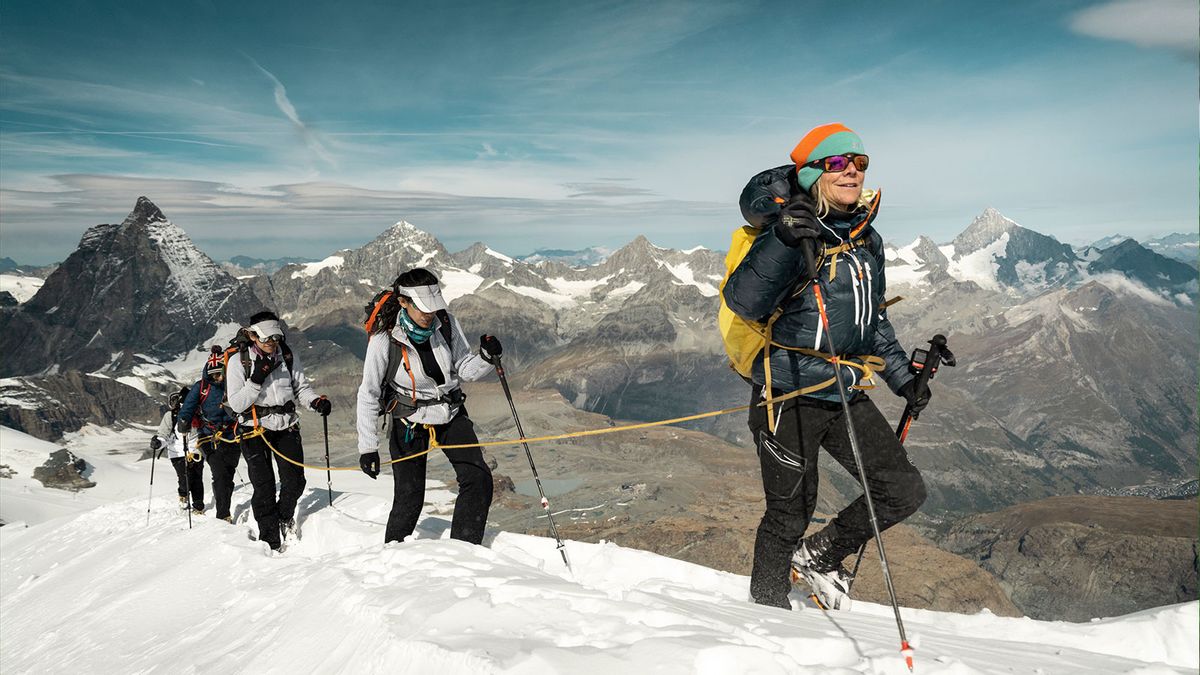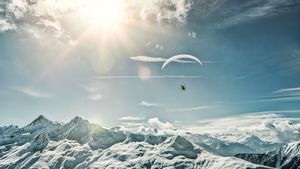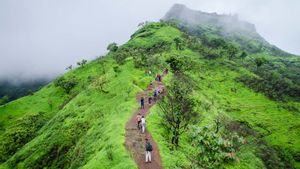My very first encounter with the Matterhorn—perhaps the most photographed and recognisable mountain in Switzerland—takes place from the comfort of my window seat onboard the Glacier Express. While I can't quite stop looking at the spellbindingly beautiful monolith, I am desperately rummaging for my camera to not miss capturing a picture of the one-of-a-kind pyramidal-shaped colossus (4,478 metres) that firmly rises above the town of Zermatt.
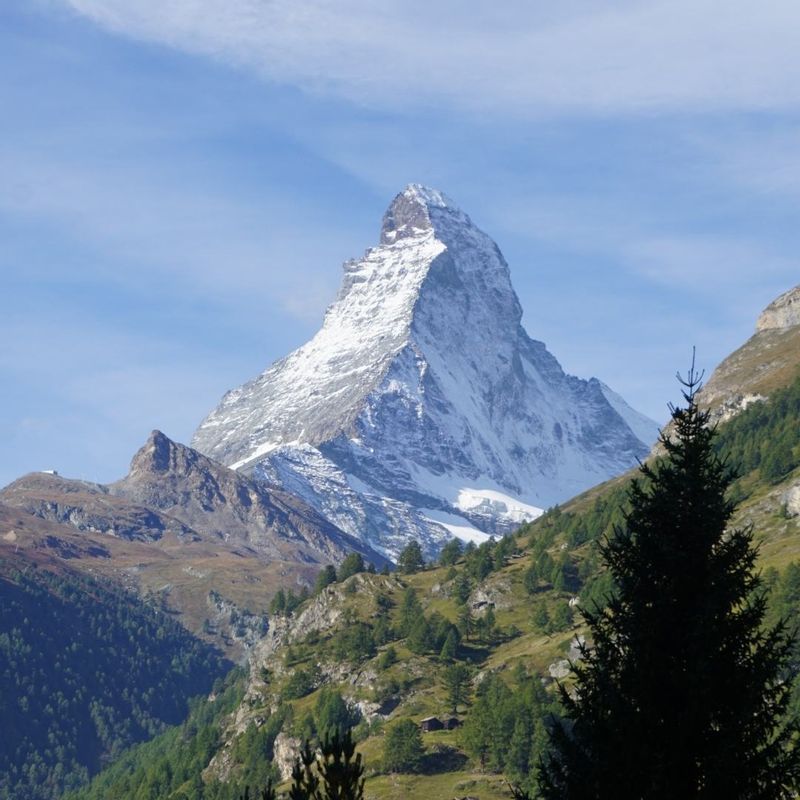
Yes, you guessed it right! I am journeying from the glitzy St. Moritz to the rustic mountain resort of Zermatt only to be part of Switzerland's 100% Women Peak Challenge—a fantastic initiative by Switzerland Tourism, the Swiss Alpine Club (SAC) and Swiss Mountain Guide Association (SBV) to encourage women to step outdoors and take on the highest peaks in the country together in women-only teams. The idea is to inspire more women to take up the sport of mountaineering, which is still vastly male-dominated. Our plan? Summiting the 4,164 m Breithorn (13,661 ft), a strong, glaciered mountain crest in the Pennine Alps.
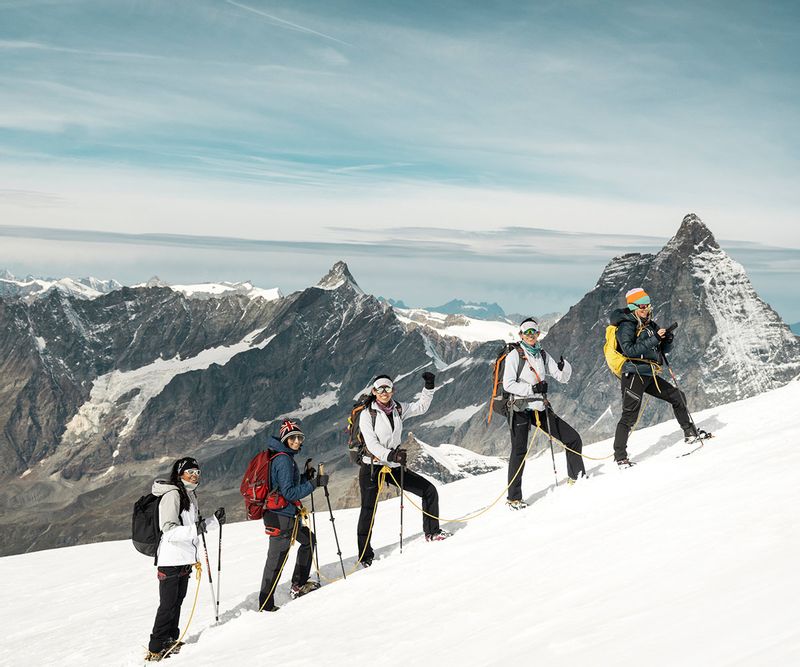
For the same, I am reaching Zermatt a day prior in order to allow my body to acclimate to a higher altitude. A car-free, idyllic mountain village in the upper Valais—one of the alpine cantons of Switzerland—Zermatt looks straight out of a postcard. More importantly, it is the starting point for the ascent of 38 four-thousand-metre peaks that offer ethereal views. The Swiss call them "four thousanders" because they are at least 4000 metres tall. Zermatt also boasts over 400 km of picturesque hiking trails, including the mule traders' trails, which date back to the 13th century. No wonder the village is legendary amongst mountaineers and hikers.
Upon arrival at Zermatt station, I meet my teammates—Everest twins Tashi and Nungshi Malik, who are not only accomplished climbers but also Guinness World Record holders for being the first twins and South Asians to complete the Explorers Grand Slam (climbing the world's seven highest peaks including Everest and skiing to the North and South Poles). A novice in mountaineering, I am hoping their company will have a snowball effect on me. I am already thinking to myself, "If they can do it, I can do it too". Knowing I have a few hours to go for my first-ever climb, I am feeling both exhilarated and nervous at the same time.

Having dabbled in trekking in the Himalayas, I am well aware that admiring the beauty of towering mountains from afar is very different from facing them up close. From the unpredictable nature of the weather to unfamiliar terrain and wilderness, you must embrace it all in to successfully scale a mountain. Perhaps, that's what shapes you as a person. For me, it's also about challenging myself as well as getting a better understanding of my endurance and fitness level.
The big day has arrived. Well-equipped with a pair of sturdy climbing boots, crampons, harness, trekking poles, some extra layers for protection from freezing temperatures and wind, and fine Swiss chocolate for snacking—we are all geared up for the climb. We begin our alpine adventure around 8.30 a.m. by taking the Matterhorn Express cable car to the Klein Matterhorn lift station or Matterhorn Glacier Paradise, which at 3,883 m above sea level allows direct ascent to the Breithorn summit, on the Swiss-Italian border.
TIP: Climbing boots, crampons, climbing harnesses and helmets can be rented in different sports shops in the village of Zermatt.
After being dropped off at an impressive altitude, we enter the glacier skiing area of Zermatt and follow the direction of the ski lift up for about 200 meters. This is when we see the majestic Breithorn looming above us. Now is the time to rope up, put on an extra layer if needed and start following the tracks over the Breithorn Plateau to the base of Breithorn. This part of the route is more or less flat. Once we reach the base of the mountain, the trail starts gaining in elevation. According to our guide Carolina George, around three to four hours should be planned to get up and down in snow, depending on one's fitness level.
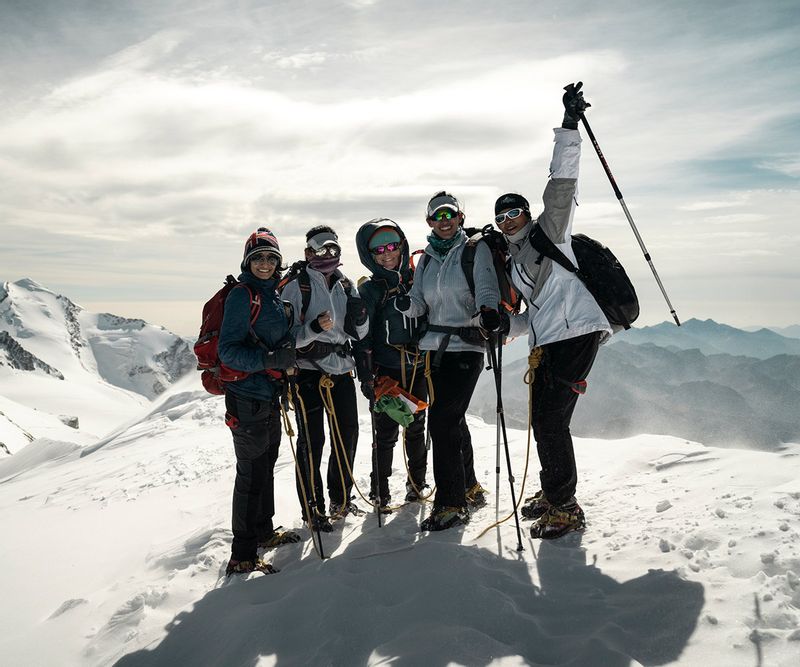
Since we are roped together to safely cross the glaciated terrain, we have to learn to adapt to each other's pace. It’s almost autumn, but there is plenty of fresh snow. We walk up the snow slope, slowly, looking out for crevasses and making sure our crampons bite into icy patches. The right technique involves kicking in with your toe and ascending like you're climbing stairs. We try and step on previously formed steps (steps created by our guide or trekkers ahead of us), in order to avoid our foot from unknowingly going deep in snow.
For all of us, this is our first-ever experience in the Swiss Alps! The Alps are certainly different from the Himalayas, with their own set of unique challenges. It does take us some time to get a feel of the topography. In the mountains, weather can change dramatically from one moment to the next. Although we're lucky to be able to enjoy a bright and clear day, the weather keeps switching between chilly, sunny, windy and we are adapting to these changes as we walk. Also, the thinning atmosphere is making it harder to breathe. The air is cold, less dense and this is giving me a dry mouth. I feel thirsty every now and then. George highlights the importance of proper breathing techniques when ascending a mountain. She says, "Add resistance to your exhalation by pursing your lips and exhaling forcefully". This is what mountaineers call the pressure breath. This is one of the most important breaths for climbing at high altitudes and helps combat the lower levels of oxygen and decreased air pressure. The trick works magically well for me and I am starting to gradually feel comfortable in my natural surroundings. I am beginning to observe the beauty of the landscape enveloped in snow. I realise that the world we live in is full of wonder and mystery and not everything can be rationally explained.
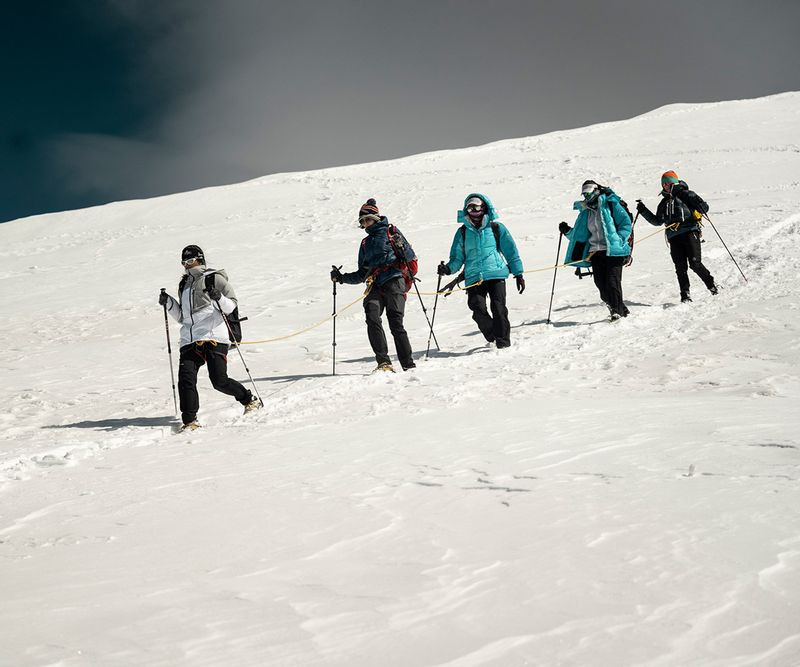
On the way up, we exchange smiles with fellow climbers who are descending the mountain; one of them is an octogenarian full of vigour and vitality. I am in awe of his determination, physical strength and enthusiasm for life. Mountain climbing—like hiking, skiing, eating cheese, and running trains on time—is a way of life in Switzerland. The Swiss truly live an active life and don't let age dictate what they can and cannot do. For them, age is just a number. Perhaps, that's one of the reasons an average Swiss lives a healthy, long life.
| FUN FACT: Zermatt mountain guide Ulrich Inderbinen was famous for his longevity and love for mountain climbing. Inderbinen had been on the top of Matterhorn over 370 times. In July 1995, he climbed the Breithorn and the Allalinhorn more than a dozen times. He was 95-years-old at the time. |
We manage to reach the Breithorn’s crest within the targeted time frame to gracefully receive our much-deserved reward: stunning 360° views over several 4000-metre peaks in the Italian, Swiss, and French Alps. The views towards Matterhorn, Dent Blanche, and Weisshorn are pretty impressive, I must say. I am stunned to the point of speechlessness. It is extremely windy on the summit, causing my fingers to go numb, but it's tough to brush aside the sheer beauty of the Alps and focus on any aches, pains or discomfort. I am taking some time to process the feeling of tranquillity, pure joy, high energy and indescribable pride derived from scaling an Alpine Mountain. For me, the fact that we did it in a group of women will always remain very special.
Extreme winds and harsh weather conditions make it tough to stay on the top for too long and we are already beginning to prepare for the descent.

You may ask, "Why all that effort just to stand on the summit for 10 minutes before rushing all the way down again?”
This is when American television writer Andy Rooney's lines come to mind: "Everyone wants to live on top of the mountain, but all the happiness and growth occurs while you’re climbing it.” And this is very true indeed!
The soul of a mountain climbing experience lies in those little countless steps you take in order to reach a peak. While walking up a mountain, you are surrendering yourself to nature, letting it lead you, and this in itself is quite humbling. At the same time, the process reinforces your belief in yourself.
You are convinced that if you can ascend and descend a massive mountain, you can overcome many mountains in life, both literally and metaphorically. The sense of accomplishment and gratitude for the chance to be outdoors can make all the real and imaginary tragedies seem insignificant. In the end, it’s not the mountain you conquer, but yourself.
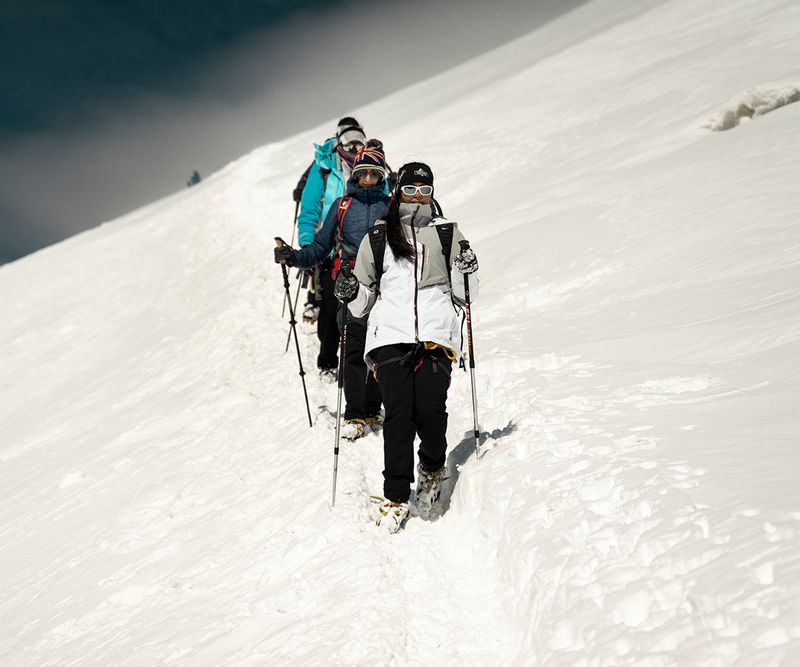
What you need for mountaineering in the Swiss Alps
|
COVID-19 rules for travellers in Switzerland
The above regulations are only applicable to Switzerland. Transit through other countries to Switzerland and visiting other Schengen countries internally from Switzerland might be restricted, depending on the travel regulations outlined by the respective country. Travellers are advised to check with the authorities of concerned countries while planning. To check eligibility to travel, use travelcheck. Mask rulesIn Switzerland, you needn't wear a mask in open spaces. However, it's mandatory to wear a mask indoors—in hotels, restaurants, shopping malls, public transport, etc. |


